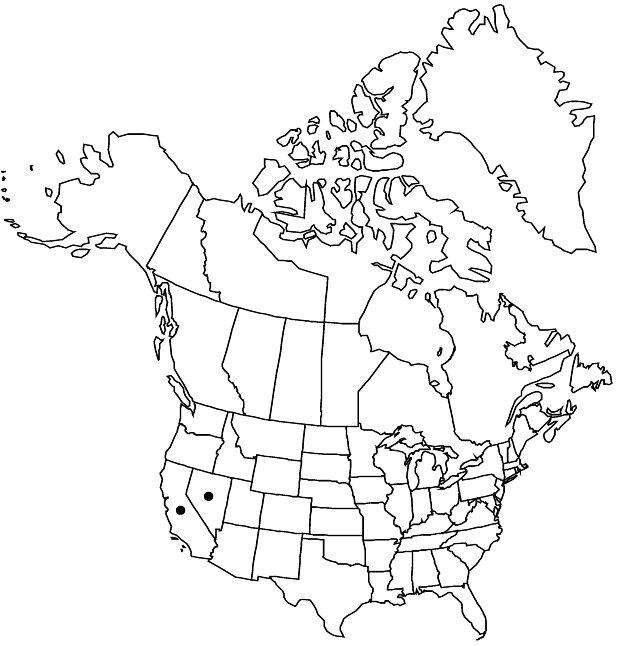Ribes nevadaense
Proc. Calif. Acad. Sci. 1: 63. 1855 (as navadaensis) ,.
Plants 1–2 m. Stems erect, glabrous or puberulent; spines at nodes absent; prickles on internodes absent. Leaves: petiole 1–4 cm, pubescent, stipitate-glandular; blade roundish, 3(–5)-lobed, cleft nearly 1/4 to midrib, 3–8 cm, base deeply cordate, surfaces with colorless, sessile or stipitate glands, pubescent abaxially, glabrous adaxially, lobes deltate, margins bluntly toothed, apex obtuse. Inflorescences erect to pendent, 8–20-flowered racemes, 5–8 cm, axis stipitate-glandular, flowers crowded into distal 1/4–1/3. Pedicels jointed, 3–5 mm, stipitate-glandular; bracts oblanceolate, 4–8 mm, glandular-ciliate. Flowers: hypanthium bright pink to deep rose-red, turbinate, 2–2.5 mm, stipitate-glandular; sepals not to somewhat overlapping, erect, arching inward, bright pink to deep rose-red, obovate, 4–5 mm; petals nearly connivent, erect, arching inward, white, obovate, not conspicuously revolute or inrolled, 2–3 mm; nectary disc not prominent; stamens as long as or slightly longer than petals; filaments linear, 1.9–2.5 mm, glabrous; anthers cream, ovate, 0.5 mm, apex blunt; ovary stipitate-glandular; styles connate nearly to stigmas, 4 mm, glabrous. Berries palatable, blue-black, globose, 6–8 mm, stipitate-glandular.
Phenology: Flowering Mar–Jul.
Habitat: Forest margins
Elevation: 600-3100 m
Discussion
Ribes nevadaense occurs in the southern and northern Coast Ranges, Transverse Ranges, and Sierra Nevada in California and western Nevada. Reports of it from southwestern Oregon are questionable. It is unusual in having pink bracts subtending the pedicels. Its leaves are much thinner in texture than those of R. malvaceum Smith.
Selected References
None.
